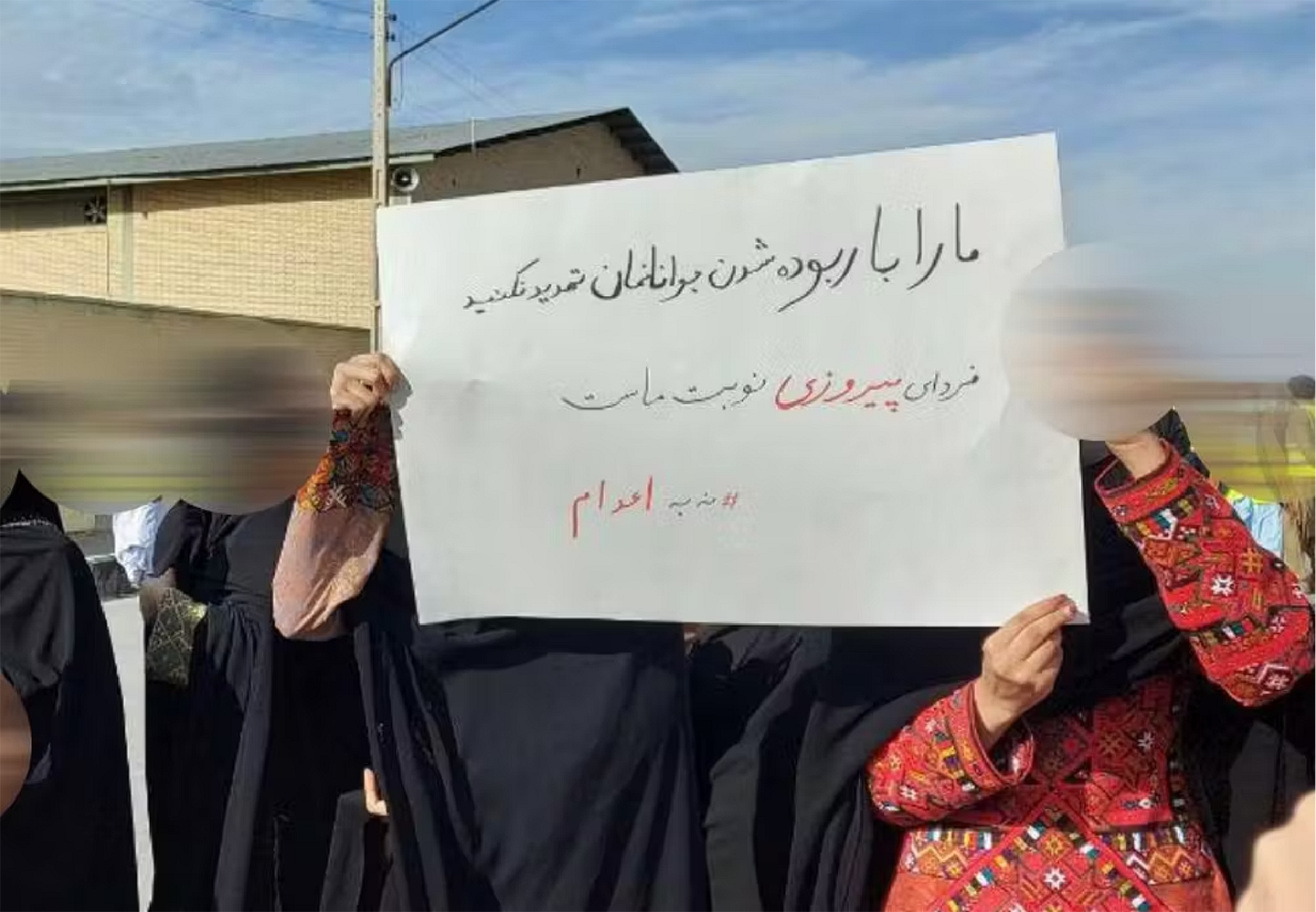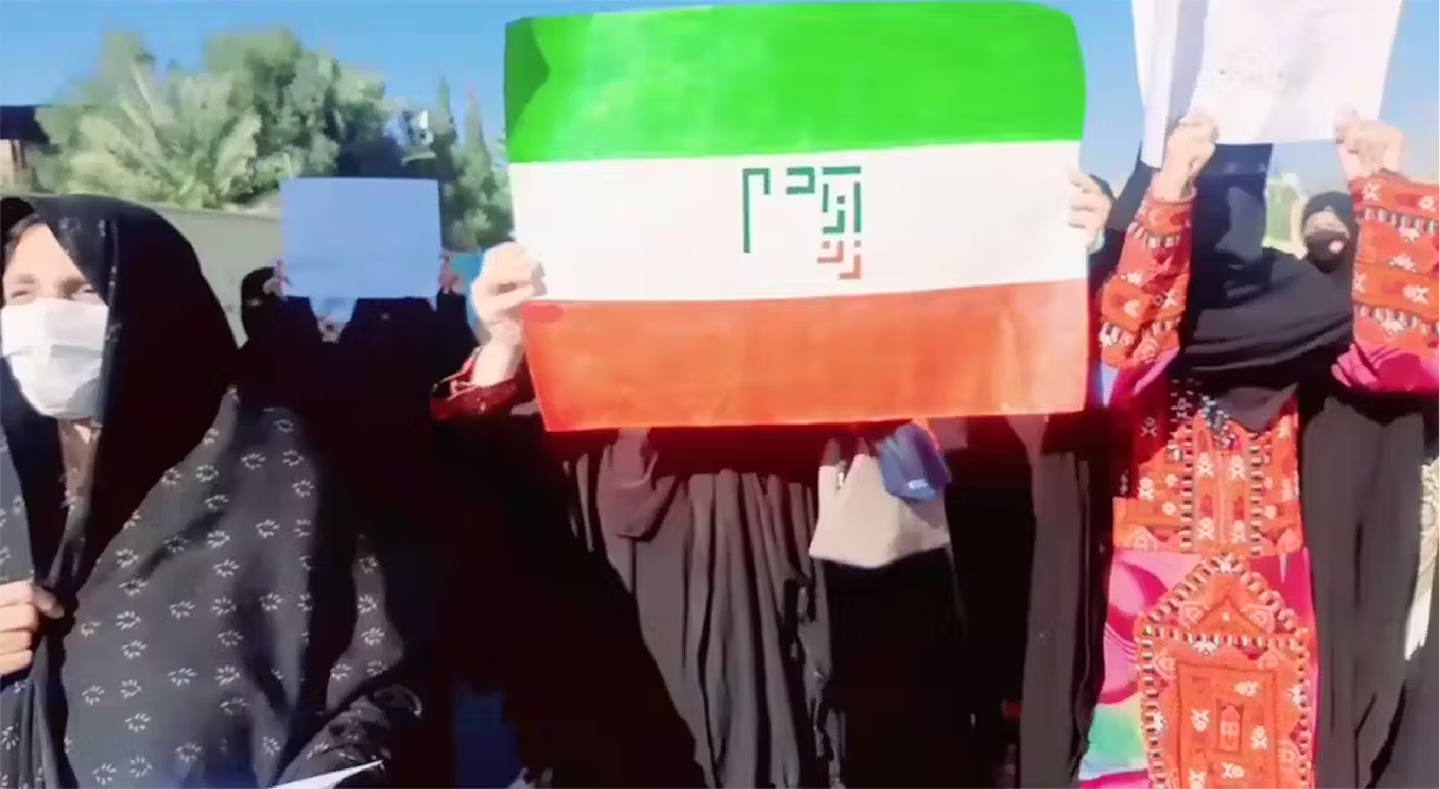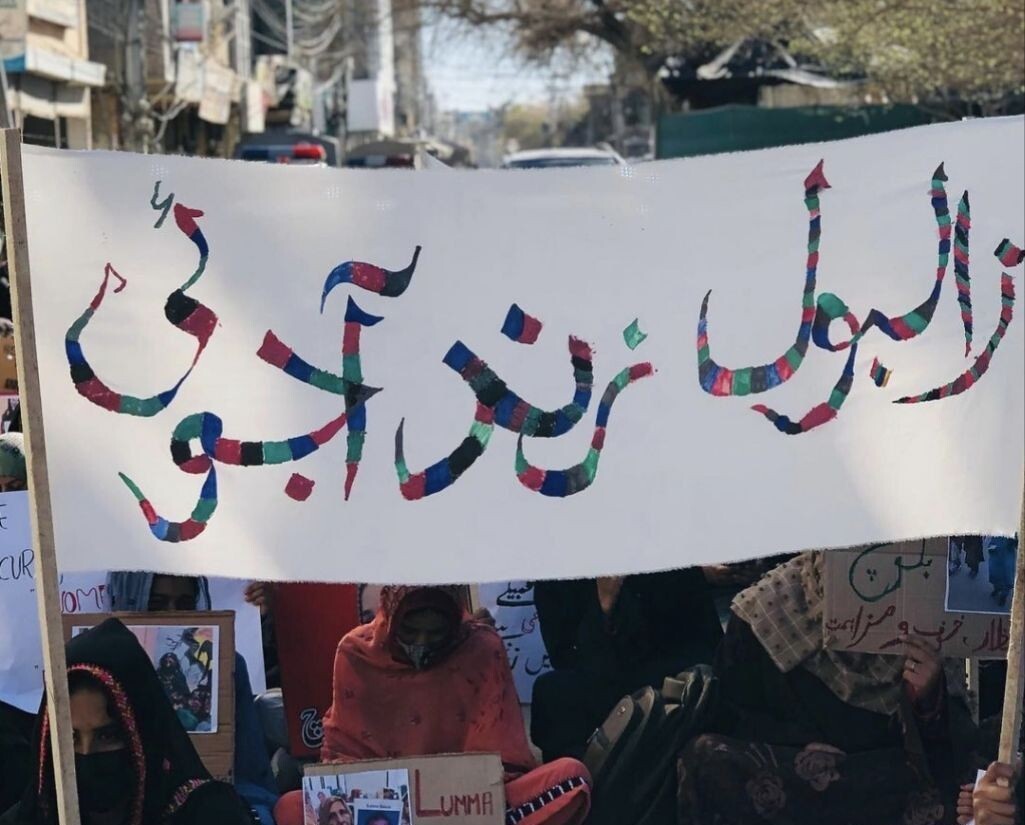On September 1, 2022, the commander of the police force in Chabahar raped a fifteen-year-old girl named Maho while interrogating her.1 News of this rape circulated along with the news of Jina Mahsa Amini’s murder by the state twenty days later. Then on Sunday, September 25, 2022, Molavi Abdolqaffar Naqshbandi, the interim leader of Friday prayers in Rasak, a town in Sistan and Balochistan (in the same region as Chabahar), released a statement confirming Colonel Ibrahim Koochakzayi’s rape of this young girl and called for a public trial. Five days later, after Friday prayers on September 30, 2022, the people of nearby Zahedan took to the streets in support of Maho and against the state murder of Jina. The crackdown on this protest was so violent and bloody that it became known as “Bloody Friday,” or the “2022 Zahedan massacre.” On that day, the Islamic Republic’s security forces opened fire on protestors after their prayers and killed at least ninety-six people. In an investigative report on this tragedy, the New York Times showed how security forces opened fire for no reason—there was not a single armed protestor among those praying.2 Security forces targeted children, young adults, and the elderly. Islamic Republic snipers killed many of the protestors with shots to their heads and hearts. This essay was written by a group of Baloch women called “Dasgoharan” and was published on their Instagram page.3
***
This is not a scholarly or journalistic essay. It was written amidst the flames of anger and blood, and on trembling ground. It is not yet clear to us where the conflict between the military forces of the state/religion/tribe and the oppressed lower strata of society will lead. The outer hard shell of power does not hesitate to do everything it can to maintain the status quo and to suppress the anger of subordinate women and youth. The coming days are important. They will tell of the relentless but disorganized struggle of different assemblages of people who are socially excluded, especially women. This is a dynamic struggle that has always crystallized in the form of resistance in daily life and has often been ignored in the past. But today, it has come to the surface so powerfully that it is no longer possible to deny.


A scene from the Jina uprising in Balochistan. The banner reads, “Do not threaten to kidnap our youth. The day after victory is our turn. No to executions.”
Maho’s tragedy showed us the basic conflicts of Balochistan society all at once and in the most naked form. Suddenly, society lost its patience and began to boil over. We remember that when Iran was burning from the fires seeking justice for Jina Mahsa Amini, a news item disturbed Balochistan’s cyberspace. A senior police officer in Chabahar had raped a teenage girl who lived in one of Chabahar’s villages. The rumor mill was abuzz as numerous confirmations and denials circulated. The judiciary and law enforcement authorities did not feel the need to respond. The person accused of rape was from the same official apparatus of repression that never felt obliged to answer for its crimes, insults, and humiliations, considering itself justified in doing whatever they pleased. Meanwhile, a well-known Baloch activist in Balochistan’s cyberspace publicly pursued the truth of the story through their network of acquaintances (while others did so secretly). While the official media remained silent, this civic activist made the matter public and spread information about the event. Soon after, he was threatened, forced to remain silent, and then arrested.
In a society known for its silence in the face of aggression, this level of scrutiny of independent citizen activists and their position was unprecedented. The general perception has always been something like: “It is Balochistan. The clan decides for itself. Most likely, the girl will disappear. The story is going to disappear similar to the rape of some forty women in Iranshahrin in 2018.” But society could not bear the silence any longer. Something had been cracked open. The wide understanding of discrimination, suffering, and the recognition of the people’s right to determine their destiny had changed. This transformation was particularly evident in the case of the movement seeking justice for Maho.
At first, the clergy remained “meaningfully silent” and called on the people to remain calm. Members of parliament and the official parties active in Balochistan shrouded themselves in silence, and no words came from the influential clans. The ruling Shiite central government handled this disaster similarly; this approach, of course, has become “normal”—a frequent occurrence in the territory of Balochistan. Perhaps a review of structural and historical discrimination in Balochistan will help illuminate the government’s approach to the violence that Maho was forced to endure and the movements that followed.
For years, the Shia central government has kept Balochistan systematically underdeveloped. The region has been deprived of justice-oriented programs through disenfranchisement and structural discrimination. For years, the central government has destroyed any hope for a better life and dehumanized the population with its centrist, hegemonic system of meaning. It has represented Baloch men as untamed violent brutes and its women as oppressed and powerless figures. Only people from influential and wealthy circles could improve their own material positions through complicity with the central Iranian state. Today, widespread poverty, high illiteracy rates, unemployment, and lack of identity documents for residents in Balochistan are no longer a secret. Baloch people have been a forgotten nation for years, and the proof of this is the increase in executions of Baloch people in the last two years without transparency or fair trials, which leaves no hope for justice for other crimes as well.
Despite this painful history and systematic elimination, the massacre of justice-seeking, empty-handed people on Bloody Friday in Zahedan exposed to Iranians more than ever before the magnitude of the oppression and discrimination faced by the Baloch people. The government, which shut down the internet in the days following the uprising, could not silence the voices of justice-seeking Baloch people and could not implement its old and outdated scenario in Balochistan. The Iranian government, which has always pitted the interests of non-Baloch native residents against Baloch people to advance its own interests, has now found itself unable to win popular support. The armed groups active in the border areas of Balochistan had been previously weakened by Pakistan and the Taliban, and this time, the government could not defend the usual claim that “the people of Balochistan are armed.” On that Bloody Friday, Baloch people had nothing but sticks and stones in their fight against machine guns, as evidenced by countless videos released after that bloody day.


Baloch women protesting in Zahedan, the capital of Iran’s Sistan and Balochistan province, on December 2, 2022.
The totality of these facts prompted people in other regions, with diverse ethnicities across Iran, to sympathize with and express their support for the Baloch in their protests and gatherings. These changes and sympathies promise new days, days that warn the government to be afraid of the transforming society of Balochistan.
For years, the Sunni clerical institution led by Abdul Hamid Ismail Zahi tried to institutionalize the oppression of women and maintain its base by fighting and negotiating with the government and clans. It still believed that Zahi has the last word and speaks for all Baloch. This institution had not dealt with this form of disobedience even when its support for the Taliban and Raeesi’s presidency had discredited the institution in the eyes of women and activists in Balochistan. Other Sunni clerics in Balochistan found themselves in a similar situation. Among all the region’s Sunni imams, only one was willing to listen to Maho’s family and to speak from an official platform about the oppression they faced before the street protests started. However, the people of Chabahar spontaneously took to the streets and gathered without invitation or support from traditional authorities. The first rally, which lasted late into the night, eventually led to the arrest of several people, including Baloch women, some of whom are still in prison. Even three days after this rally—that is, on Zahedan’s Bloody Friday—people did not remain silent and revolted in protest against Molavi Abdul Hamid. The statistics that have been compiled so far on the fatalities from this bloody day confirm the oppression already mentioned: many of those who were killed did not have birth certificates; some had a history of drug-related accusations and experienced humiliation in provincial prisons; some of them came from marginal areas like Shirabad, a neighborhood that is one of the poorest and most deprived areas in the peripheral regions of Iran. But because they were rebellious, they had to be put in their place by power.
The response to Bloody Friday by the public pushed some clerics to try to dampen the anger by making statements in support of the demonstrators. This shows how the people were able to endanger the clerics’ hold on power and at the same time discredit the logics of the apparatus of repression without needing the support of an external authority.
But the Sunni clergy was not the only institution whose authority was shaken. The clan,4 another authority in Balochistan’s traditional society, also lost much of its credibility. The clan, which used to hold chieftaincy (khawanin) in Balochistan, largely lost its influence after the Iranian Revolution and with the spread of Islamism, when many of its chiefs fled Iran. This ancient institution, which could have been destroyed through the implementation of justice-oriented and democratic programs, returned to the political stage once again in the absence of a program for human development in Sistan and Balochistan and in the shadow of the repression of any form of civil, social, and independent political activity. Taking advantage of widespread poverty by exploiting problems of livelihood, the Islamic Republic has deployed and militarized the clan system. In order to control the borders and subjugate the critical and dissident Balochis, the Revolutionary Guard, with the help of the clans, have allowed much oppression of the Balochis, especially women, by arming the clans and handpicking their leaders. In the case of Maho, the clans have once again dashed any hope of legal action and abandoned the Baloch people.
All these forces—the central government, the Sunni clerical body, and the tribes—have so far been unable to provide a response to the oppression undergone by Maho and the Baloch community. These days, government representatives are traveling to Sistan and Balochistan. They are negotiating or making agreements with imams, trustees, elders, and representatives. The old forces are coming together to settle the crisis. But the Baloch, who have taken to the streets empty-handed, have scuttled these agreements. Now Baloch women have also joined the protest movement. In schools in remote villages, teenage girls are tearing up photos of Islamic Republic leaders, making statements, and writing slogans on walls. Society in Sistan and Balochistan is shedding its skin. What we witnessed in the movement seeking justice for Maho and the Bloody Friday of Zahedan shows a great change in the lower strata of society. Maho has shown us that as much as the reactionary forces have resisted our cries for Janin, Zand, Ajoyi (Woman, Life, Freedom), we Baloch have changed and are breaking new ground more than ever before.
Chabahar, or Chah Bahar, is a port city on the Gulf of Oman. It is in the central district of southeastern Iran, in the province of Sistan and Balochistan. This article was originally published on October 16, 2022 with the title “Why Is the Chabahari Girl Our Symbol?” At that time, we did not know the real name of young Maho and called her by the name the media called her: “Chabahari girl.” Now that we finally know her name, we are republishing this essay with a new title. “Dasgohari” is the term for a longstanding social tradition of camaraderie, companionship, care, and sisterhood among Baloch women.
Ed. note: see →.
Trans. notes: the introduction to this essay is translated from Radio Zamaneh’s republication of the essay →.
Trans. note: or tribe.
Translation edited by Soori Parsa.


